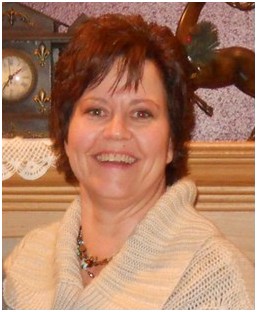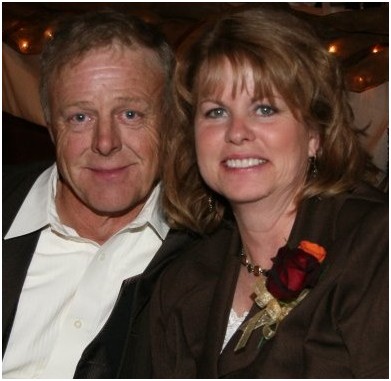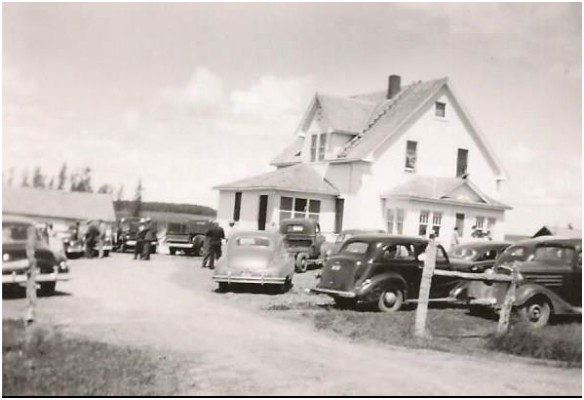I was surprised when I saw the picture of the house in the T. Mts. on yesterdays blog. This is the farm house on Little Prairie of my Grandpa & Grandma Art & Arla (Johnson) Millang. I am thinking it was taken in the late 40’s-early 50’s. It was located ¼ mi. from Little Prairie Church and they hosted many wedding receptions and funeral lunches there. Also, many church services were held there too when the winters were too cold to heat the church.
Stan Salmonson (61)
Stan,Now that you have identified this house, I recognize it too. From our home we had a clear view of the Art and Arla Millang house 4 miles east and one mile south across country. Little Prairie Church was across the road, on the south side of Highway 43, from the Millang house. I remember being at a few community gatherings in that house too. As I remember there often times a lot of people at these gatherings too.Stan, I remember being a few community gatherings at your folks house too. I was quite young, but I do remember there being lots of people. I think some of those gatherings were Christmas parties. I don’t remember the organizations they were associated with though. I remember it being winter with the heavy coats, overshoes, etc.Gary
Afternoon Gary: The picture of the Art Rude farmhouse looks just like my Grandparents house. Art and Arla Millang’s. Could it of been the same builder?
Diane Millang Volk
might be Art Rude’s, is actually Art and Arla Millang’s house on Little
Prairie. Arla was my grandmother’s sister so I spent quite a few Sunday
afternoons over the years with Mom and Grandma visiting them and their
son Milton. It was fun for me to go there when I was young but it was
kind of up to Milton to entertain me so he probably wasn’t as enthused
as I was, being he was about 13 years older than me. We watched TV on
his little black and white TV. Usually it was Canadian
channels—hockey or curling which I didn’t understand at all. I do
remember watching ‘The Big Picture’, which was a weekly military
documentary, at their place once so that was a highlight as I really
liked that show and didn’t miss it if I had the choice. Arla always had
good old fashioned Norwegian cookies and stuff for lunch so it was a
neat place to go to visit. I spoke with Stan Salmonson and we kind of
agree that the picture was probably taken in the early 50s but we aren’t
sure what the occasion might have been for so many people being there.�
Maybe a church gathering or a wedding reception is as close as we can
guess. We did decide who we believe some of the vehicles probably
belonged to though. Mostly neighbors and relatives. Thanks Gary!
Dick
Cheryl,I have updated Penny’s my records with Penny’s new email addressThanks,Gary
Subject: My follow up on HOW OLD IS GRANDMA?
We boomers are the ‘ filling’ in the sandwich generation too.
I recall when my family lived in Washing ton my sixth grade year 63-64.Dad was working construction. We lived in a nice neighbor hood.But many of changes were occuring in the Seattle metro area.I know it scared Dad.He and my mom couldn’t wait to get usback to North Dakota where life was simpler.I was so glad they did. I liked going to a smaller school andseeing familiar faces every day.
My parents were somewhat old- fashioned.We had access to the family car as a family.My parents never had credit cards.Each kid, each had chores to do every day,after a snack, then we changed into chore clothes.The biggest chore day was Saturday.The barn needed a load of straw or the house got a deep cleaning.No one was exempt.Week days the one black and white 2 channel t.v. was on for an hour or twofor the news and 1 show. Homework came firstSummers we didn’t even watch, unless it was Sat. night and hadn’t gone visiting.We watched then as a family.Everyone went to bed by 10.
Friday and Saturday nights, the entire family all would pile in the car,to go “visiting”. We interacted with cousins.We also knew, to listen to the adults.We kids called grown ups Mr. or Mrs, and gave up our chairs for them.We were to treat everyone with respect
Holidays were spent with family…..If there was an older person withno place to go, Dad would go get them…………(Like Ward and Annie)If a person had an odd way of smelling or looked odd.___That wasn’t important.Important_____ were our responsible actions and actions to others.And if one of the aunts and uncles were around we had that boundary reminder.We ate at least one or more meals a day together as a family.Then we kids cleaned up together.Thanks Vickie
This was the essay sent to me by Ron, which stretched my mind., to follow with my thoughts. VM

Eldon Berg’s reply to NeolaNeolaI knew I saw the reference somewhere.There are three things that go when you get old.
First is your memory, I can’t remember the other two.Eldon BergNQ Software206-227-5136
By SCOTT WAGAR
Bottineau Courant
In the summer months of 1981 in Jamestown, N.D., a construction company was constructing an apartment complex when it accidentally unearthed nine linear and nine conical mounds while preparing the footings for the complex. Within three of the mounds, 75 Native American were found buried, which included a female Indian between the ages of 35 to 45, and who was found to have had tuberculosis of the hip bone. The radiocarbon dates of the hip bone dated to around 980 A.D., granting North Dakota with one of the oldest paleontological specimens of TB found on the North American Continent.
Although finding TB in the State of North Dakota during the time John the Apostle was writing the Book of Revelation, little is known about TB until the beginning of the 1900s when this disease made an appearance in the state, and marked it for death.
As TB made its way across the state killing numerous individuals and bringing fear to all its’ communities, the Turtle Mountains gained a sense of immortality as the only place in North Dakota where one could go to be saved from TB; and, it came due to special circumstance that could only be found in the Turtle Mountains.
In the “Biennial Report of the State Board of Health to the Governor of North Dakota for the Years of 1901 and 1902,” Dr. H.H. Healy made a quick reference in his report about TB, After careful inquiry I believe that the state is remarkably free from this disease.”
Two years later, when it came time for Healy to write the state health report, he was so ill with TB he could not write or present the report to Gov. Frank White.
Healy would recover from his TB, but the majority of the state would not be as lucky as Healy, as death rates increased across the state due to TB. By 1908, the statistics on TB were alarming.
“One death in every ten, excluding stillbirths and those who died from violence, is due to it (tuberculosis),” the state health report stated. “At this rate, assuming our population to be 500,000 residents, there will die of tuberculosis in our state 50,000 of those now living.
With an alarming rate of TB deaths in North Dakota, Dr. James Grassick and Dr. Fannie Dunn Quain founded the Anti-Tuberculosis Association of North Dakota in 1909 immediately began lobbying the state to construct a sanatorium.
Through Grassick and Quian’s hard work, the two physicians saw some positive results from lobbying with the state’s leadership as they went into the 1909 legislative session, obtaining $10,000 to purchase land for a state run sanatorium, along with a board to oversee the project.
The board consisted of Gov. John Burke, the newly elected democratic governor to North Dakota; Grassick as the newly appointed superintendent of the State Board of Health; Dr. G.F. Ruediger of the public health laboratory; Quain and C.J. Lord of Cando.
For the most part in 1909, the word sanatorium wasn’t a familiar term in North Dakota. The word comes from the Latin word, sanare, which when translated into English, means “to heal.” Sanatoriums had its beginnings in the United States starting in 1884 when Dr. Edward Trudeau of New York was diagnosed with the disease. Learning of his fate, he made the decision to spend the remainder of his days resting in the Adirondack Mountains.
While living in the Adirondacks, Trudeau discovered that instead of health failing, his health improved. He theorized that rest, fresh air and a good balance diet in an isolated area with proper altitude and low moisture rates could save a person’s life.
In 1884, Trudeau put his theory into practice and opened the Adirondack Cottage Sanatorium. Trudeau’s theory and sanatorium was successful and by the turn of the century sanatoriums were opening up nationwide.
In North Dakota, after gaining funding to purchase land for a sanatorium, the five board members started looking for best the location to construct the state’s sanatorium and soon found themselves on the south-east side of the Turtle Mountains just northeast of Dunseith.
Like Trudeau’s Adirondack Mountains, the state board felt the Turtle Mountains was the best place to locate to construct a sanatorium, because it held the right climatic conditions for TB patients, which included of high altitude, low moisture rates and all in an isolated area.
The site was also protected on the north and west sides by hills and trees, the site offered fresh water with lakes and springs and the ground’s soil was very fertile for growing crops. The land was perfect to construct an isolated community where people could come and recover from TB.
By choosing this land in the Turtle Mountains, the state also acquired an additional 100 acres of land as a gift to the state. The board made the decision to purchase the site and secured it for $4,052.
Although pleased with the funding they received to purchase the land and prepare it for a sanatorium, Grassick and Quain were disappointed that no allocations were made to construct the building, leaving them with land, but no building to start caring for victims of TB in the state.
Burke, who was a strong supporter of sanatoriums, and great orator, spoke on the issue during the opening of the Twelfth Legislative Session of North Dakota in his State to State address to the joint session of the North Dakota Congress in 1911.
“We have expanded altogether $4,052 for land and $4,119 for the lay out of the land. We have $1,8000 of the appropriations still unexpended,” Burke said. “We have expanded about $100,000 in the last two years fighting disease in animals. Surely we can afford to spend a little fighting this dreaded disease among our own kind. Everywhere war is being waged against the Great White Plague. It is no longer an experiment. We know that consumptives are being cured everyday in sanatoriums throughout the land. Let us not be behind the times in this respect.”
Twenty days later, Rep. Wesley Fassett of Dunseith, introduced House Bill 155 as “a bill for an act to provide for the establishment and government of a State Tuberculosis Sanatorium,” Fassett said in the House chamber with great determination, which was passed unanimously in both the house and senate with $25,000 allocated to construct an administration building; $3,000 for cottages to be built where patients would be located and treated, $1,000 for equipment; $1,000 for stock and poultry and %500 to construct a barn.
The bill also included that a board be appointed to oversee the project. Burke appointed William Gottbrecht of Dunseith to be the president of the board; Dr. D. Lemieux of Dunseith the secretary, Dr. J.P. Widmeyer of Rolla the superintendent along Marion Edwards of Rolette and Grassick.
The board hired H.G Lykken of Grand Forks as the consulting engineer; W.J. Edwards of Grand Forks as the architect of the administration building and the Northern Construction Company of Grand Forks to construct the water, sewer and administration building.
After four long years, Grassick and Quain’s patience and determination to bring a state sanatorium to North Dakota finally paid off in the later part of November 1912 when the North Dakota Tuberculosis Sanatorium received its first patient; and, a future that would change North Dakota in infinite detail.
At the station, the three men each buy a ticket and watch as the three women buy just one ticket.
‘How are the three of you going to travel on only one ticket ?’ asks one of the men.
‘Watch and learn,’ answers one of the women.
They all board the train. The three men take their respective seats but all three women cram into a toilet together and close the door.
Shortly after the train has departed, the conductor comes around collecting tickets. He knocks on the toilet door and says, ‘Ticket, please.’ The door opens just a crack, and a single arm emerges with a ticket in hand. The conductor takes it and moves on.
The men see this happen and agree it was quite a clever idea; so, after the game, they decide to do the same thing on the return trip and save some money. When they get to the station they buy a single ticket for the return trip but see, to their astonishment, that the three women don’t buy any ticket at all!!
‘How are you going to travel without a ticket ?’ says one perplexed man.
‘Watch and learn,’ answer the women.
When they board the train, the three men cram themselves into a toilet and the three women cram into another toilet just down the way.
Shortly after the train is on its way, one of the women leaves her toilet and walks over to the toilet in which the men are hiding. The woman knocks on their door and says, ‘Ticket, please.’
I’m still trying to figure out why men ever think they are smarter than women!



